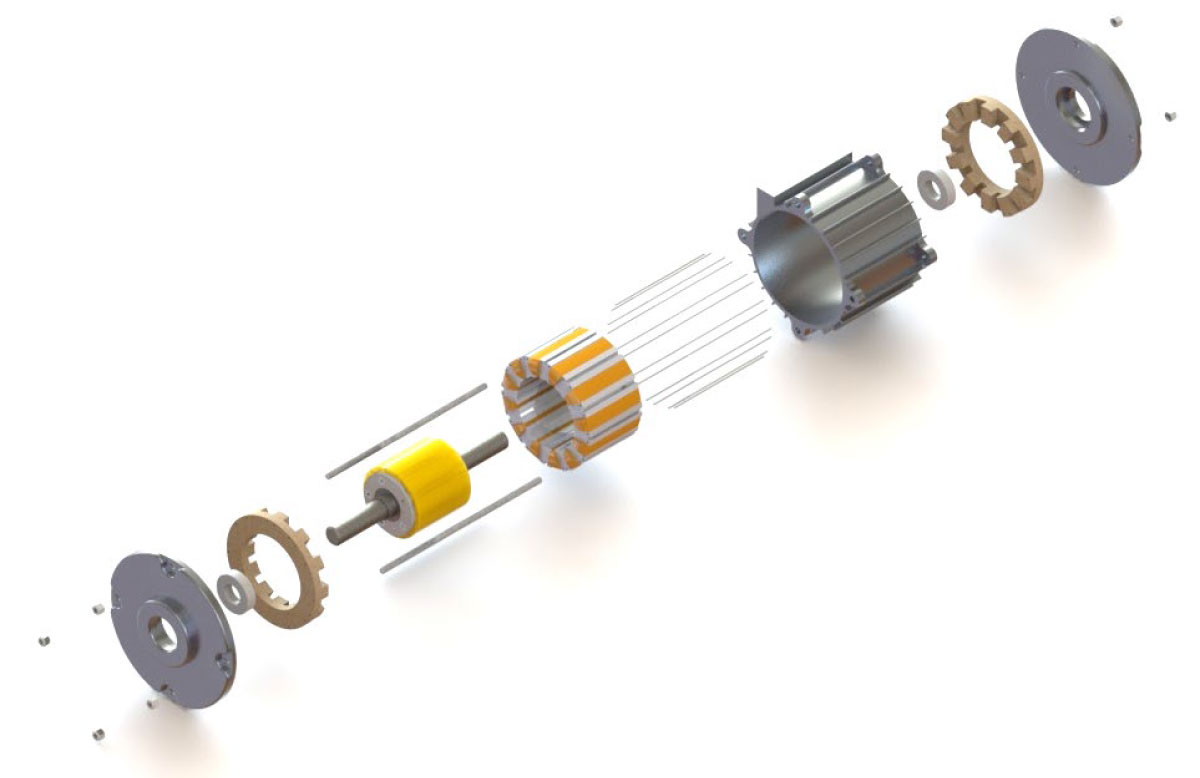Breaking China's Grip: The Rise Of Alternative Electric Motor Technologies

Table of Contents
The Current Dependence on China for Electric Motor Components
China's leading role in the production of rare earth elements, essential for the powerful permanent magnet (PM) motors found in many electric vehicles and industrial applications, is a critical factor in this global dependence. Neodymium, a key rare earth mineral, is a crucial component of these high-performance magnets. This dependence creates significant geopolitical and economic risks. A sudden disruption in the supply of these materials could cripple the electric vehicle industry and other sectors relying on these powerful motors. The potential for price manipulation and supply chain instability is a significant concern for manufacturers and governments worldwide.
Key components commonly sourced from China include:
- Neodymium magnets: These are vital for the high-performance of permanent magnet motors.
- Rare earth minerals: Beyond neodymium, other rare earth elements are used in various electric motor components.
- Certain electronic components: China also plays a significant role in manufacturing various electronic components used in electric motor control systems.
This over-reliance on a single nation creates vulnerability to supply chain disruptions and price volatility, highlighting the urgent need for diversification.
Exploring Promising Alternative Electric Motor Technologies
Fortunately, several alternative electric motor technologies are emerging, offering viable pathways to reduce reliance on China for critical materials and components. These innovative solutions promise increased energy security, economic stability, and enhanced sustainability.
Reluctance Motors
Reluctance motors represent a significant advancement, offering a compelling alternative to permanent magnet motors. These motors use the magnetic properties of iron to generate torque, significantly reducing or eliminating the need for rare earth magnets.
- Lower cost compared to PM motors: Reduced reliance on expensive rare earth materials translates to lower manufacturing costs.
- Reduced dependence on rare earth materials: This is a key advantage in terms of supply chain security and geopolitical stability.
- Higher torque ripple: This is a potential drawback that requires advanced control strategies to mitigate.
- Potential for higher efficiency in specific applications: Further research and development are improving their efficiency levels.
Switched Reluctance Motors (SRMs)
SRMs are another attractive alternative, characterized by their simple and robust design. Their simplicity translates to cost-effective manufacturing and high reliability.
- Simple construction, fewer components: Leading to easier maintenance and reduced manufacturing complexity.
- Robust design, high reliability: Making them suitable for demanding applications.
- Cost-effective manufacturing: A significant advantage over PM motors.
- Requires sophisticated control systems: This adds to the complexity, but advancements in control technology are continually improving their performance.
Induction Motors
Induction motors are a mature technology, widely used in various industrial applications. While less efficient than PM motors in EVs, they offer advantages in terms of component availability and robustness.
- Mature technology, readily available components: Making them a readily deployable solution.
- Robust and reliable: Ensuring long-term operation with minimal maintenance.
- Lower efficiency compared to PM motors in EVs: This is a key limitation, but advancements in control strategies are aiming to improve efficiency.
- Potential for improved efficiency with advanced control strategies: Ongoing research focuses on optimizing their performance for EV applications.
Axial Flux Motors
Axial flux motors feature a unique design where the magnetic flux flows parallel to the motor shaft, offering several advantages.
- High power density and torque: Making them suitable for applications requiring compact size and high performance.
- Compact design, suitable for specific applications: Ideal for applications where space is limited.
- Complex manufacturing process: This can lead to higher initial costs.
- Higher initial cost: This is a barrier to widespread adoption, but economies of scale could reduce costs over time.
Geopolitical and Economic Implications of Diversification
Diversifying electric motor manufacturing away from a dependence on China offers numerous benefits. Reduced reliance on a single source for critical components enhances economic stability and energy security. This shift also stimulates domestic innovation, creates high-skilled jobs, and strengthens national security.
Key economic and geopolitical advantages include:
- Reduced vulnerability to supply chain disruptions: Creating a more resilient and secure manufacturing landscape.
- Increased national security: Reducing reliance on foreign suppliers for crucial components.
- Stimulation of domestic innovation and manufacturing: Promoting technological advancement and job creation within the country.
- Creation of high-skilled jobs: Boosting economic growth and providing opportunities for skilled workers.
Challenges and Opportunities in the Adoption of Alternatives
Transitioning to alternative electric motor technologies presents challenges and opportunities. Technological hurdles and economic considerations must be addressed. Significant research and development efforts are needed to improve the efficiency and performance of these alternatives, particularly to match the power and efficiency of existing PM motors. Government policies and incentives are crucial in supporting this transition.
Challenges and opportunities include:
- Need for further R&D to improve efficiency and reduce costs: Continuous innovation is essential to make these technologies competitive.
- Development of robust control systems and power electronics: Advanced control systems are vital to optimize the performance of alternative motors.
- Government support through funding and regulatory frameworks: Incentives and supportive policies are crucial for accelerating adoption.
- Industry collaboration to accelerate adoption: Collaboration between manufacturers, researchers, and governments is essential to overcome challenges.
Conclusion: Breaking Free from Dependence
China's dominance in electric motor components presents significant risks. However, promising alternative technologies like reluctance motors, switched reluctance motors, induction motors, and axial flux motors offer viable pathways to diversify the supply chain. By investing in research and development, creating supportive policies, and fostering industry collaboration, we can break China's grip on this critical technology. Diversifying electric motor manufacturing enhances energy security, promotes economic stability, and fosters innovation. Let's support initiatives aimed at breaking China's grip and building a more sustainable and secure future for electric motor technology. Learn more about these alternative technologies and advocate for policies that support their development and adoption. The future of electric mobility depends on it.

Featured Posts
-
 Le Triple Double De Westbrook Un Atout Majeur Pour Les Nuggets
May 04, 2025
Le Triple Double De Westbrook Un Atout Majeur Pour Les Nuggets
May 04, 2025 -
 Bof As View Why Investors Can Remain Confident Despite High Stock Valuations
May 04, 2025
Bof As View Why Investors Can Remain Confident Despite High Stock Valuations
May 04, 2025 -
 Analyzing Ufc 313 Key Fights And Bold Predictions
May 04, 2025
Analyzing Ufc 313 Key Fights And Bold Predictions
May 04, 2025 -
 Decoding The Logan County Jail Report A Citizens Guide
May 04, 2025
Decoding The Logan County Jail Report A Citizens Guide
May 04, 2025 -
 Nicolai Tangens Investment Strategies Amidst Trumps Trade Protectionism
May 04, 2025
Nicolai Tangens Investment Strategies Amidst Trumps Trade Protectionism
May 04, 2025
